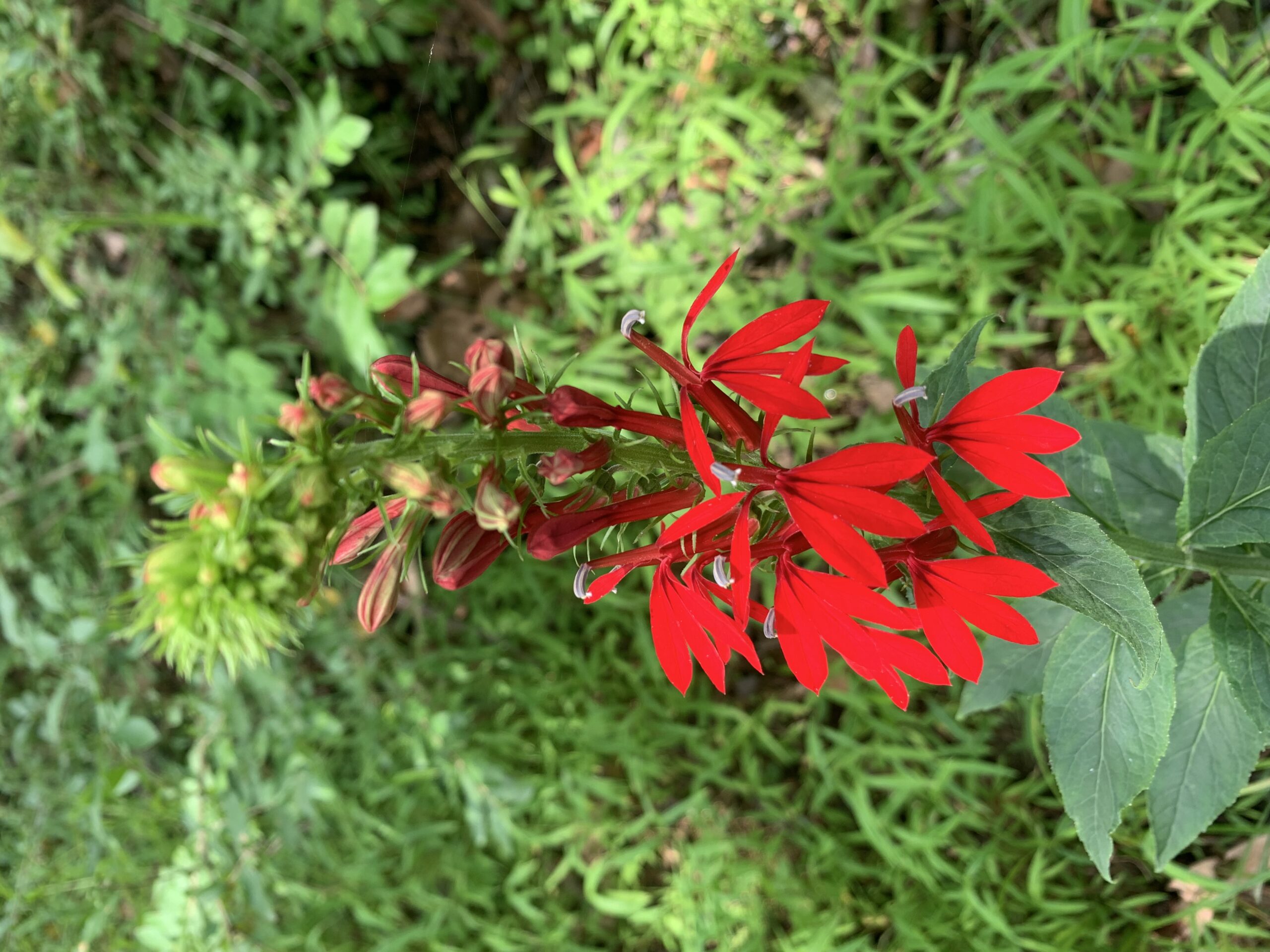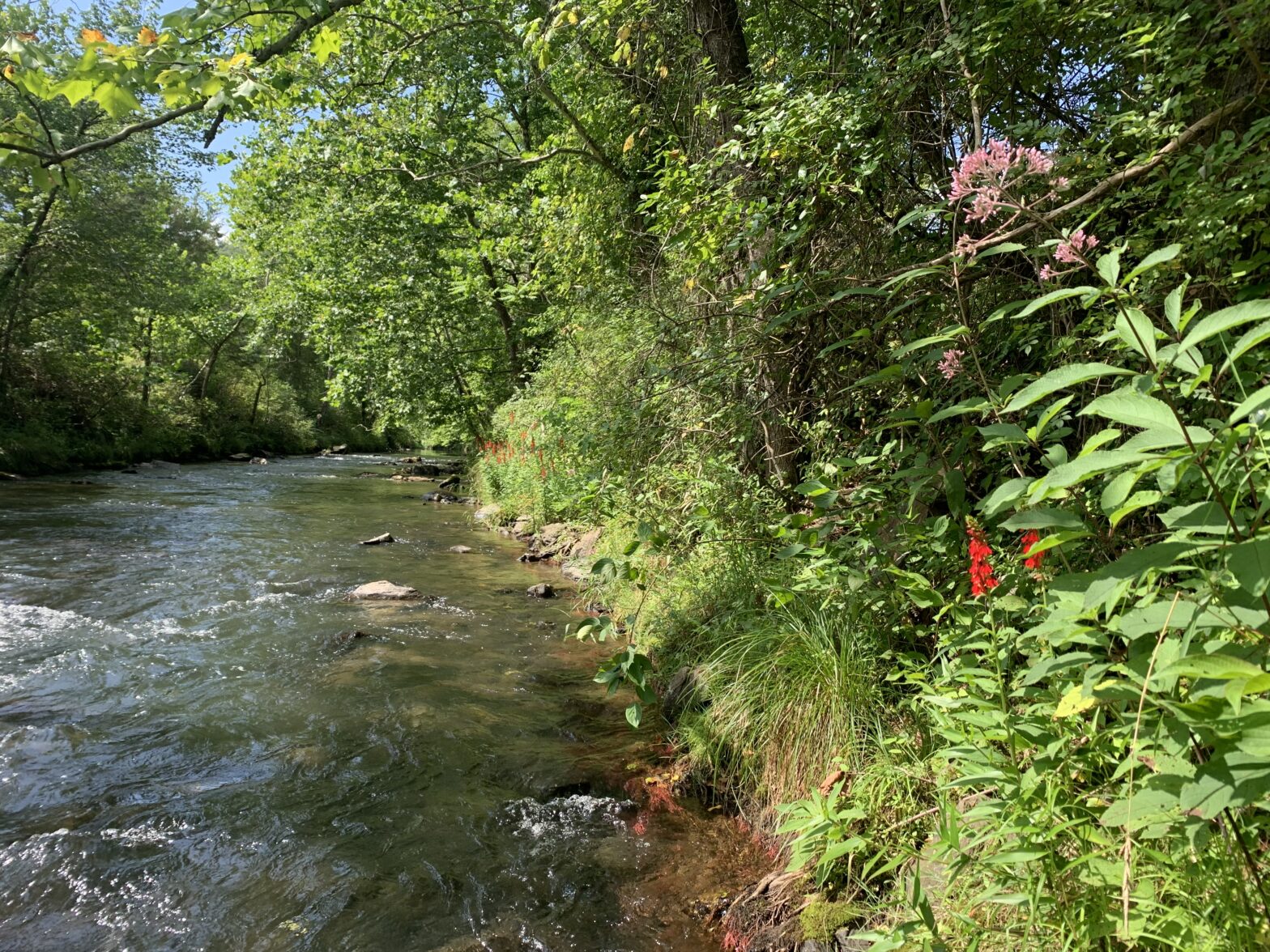“Nevertheless, even in a crowded warren, visitors in the form of young rabbits seeking desirable dry quarters may be tolerated…. And if powerful enough they may obtain and hold a place” -R.M. Lockley, The Private Life of the Rabbit
I sometimes seek out a good humbling experience while most of the time not realizing I am engaging in this great mode of self preservation. Today was no exception. For reasons not apparent to my readily accessible cognition, I chose water to fish that was too warm; water I know that isn’t productive this time of the year. Presently it’s August, arguably my least favorite month depending on mood and current state of angling progress. However, my inner self needs this apparent humbling and today I was bent for a good strike-out; catching only chubs. Saving the day if I gleaned some information from this less visited and lower section of river.
Unexpectedly, the humbling I received was in the form of a human (opposed to Great-Grandmother Nature usually performing the task) and in the span of a 10 minute conversation I had reframed this lower section of river as well as altering components of my own streamcraft. This encounter basically turned upside down most of what I thought I knew of these lower stretches; all of which was very humbling, especially being taught something novel about the river I grew up on.
I had worked all day, ran 6 miles, and then walked another mile to the steam; I wanted to take the temperature, flips some rocks over to see the variety of nymphs in this less frequented section; maybe toss my terrestrial in some likely looking structured slip currents…. then bounce. Non-negotiable. Time is at a premium these days and the management of which is no more serious than on the river.
I was standing ankle deep rigging my rod when a head and voice simultaneously peered over the tall Joe-Pye weed and Cardinal Flower chutes to inquire how the fishing was; the red colors of the blossoms perfectly framing his face, his eyes most perceptible in having a genuine precocious quality to them, a childlike enthusiasm and awareness. I replied with my usual contrived negativity, stating that I caught only chubs and the occasional sculpin; a response I mechanically apply to pretty much any verbal questioning of the kind- especially to an angler holding a spinner rod. In closing the proximity I saw he had a fly rod and in his reply he stated he had caught a 25” brown two days earlier at the head of the run I planned on covering this day. By looking at this guy, I could tell he was in earnest. I know this river and somehow I knew that he knew it too. And maybe recognizing that in myself, as I did in him, was sufficient motivation to want to truly tell me and help me get on the fish here.
Usually at first blush (at least where i’m from) when someone randomly tromps up to you and starts immediately jabbering about 20 inch plus fish in the net, all said is held suspect and at times possible contempt. Most anglers I meet now a days on this river are usually of two kinds (and let’s get this out of the way now because the differences can be immeasurable): the guided and the self taught. We do not need to go in to contrasting the two here and now but know that the gap between the two is never wider than on this specific river. The watershed has a main river that was at one time renowned around the country (even abroad) for its trophy brown trout. Currently those days are over due to many factors- didymo, New Zealand mud snails, collateral damage from mass use of glyphosate and neonicatinoids being foremost. This is the water we call blown up; everyone knows about it’s catch & release, wild trout, and put and take sections. Wild stream-bred fish are still here in great numbers however, but the big fish have declined and overall river quality is not comparable to generations past. Just like other streams and rivers in decline, big fish are still present but in lesser overall quantity. It takes a dedicated big-fish fisherman to successfully pursue them, one who must know the specific rhythms of weather, sunlight and water temperature conducive to their feeding patterns. Fly angling has become more difficult and refined here. This is probably part of the source giving rise to the intrinsic feelings of reticence among those who call this drainage their home waters.
Long tenured self taught anglers have this built in reticence and a great quality about owning it is the ability to recognize it in others. Sometimes among anglers one can see in another the incandescence of ideas in the form of knowledge, from experience. The cumulative layers of a craft sometimes visible even among simple conversation. Often closely guarded, shared only with those deemed trustworthy and appreciative. But how do we make this determination? I mean really, what takes place within the interaction that puts one at ease enough to share personal details of experience? Somehow It took roughly 30 seconds before I knew I had a lot to learn from this man, so I let him. And he let himself teach me. I think it’s safe to say we both shared things we would rarely share with another person we just met astream. The how and why can come later, what I am taking away from this is the question of statistics: the higher the human contact on a stream the higher the probability that you will run in to someone who strikes you as interesting, and interest inspires growth. Of course this would be the case right? But to those of us who highly value the solitude of angling and so greatly prefer to be alone on the water, it takes moments like these to reinforce that growth as a fly fisherman is priority. One cannot grow so much without the inspiration of and from others; I was forced to evolve, thank you.
He is a big-fish fisherman and I am a skinny-water angler; my intense want for big fish is not as developed. I have a blast chasing brushy brookies and headwater brown’s within skinny blue lines- technical presentations and well executed drifts is what gets me going. Being closely aligned as we were in our fishing nature and thought about the important things, our actual fishing methods and the means we acquired these views and practices came from completely different backgrounds. As it pertains to this river (with the absence of rising fish of course) we both have been tight-lining exclusively the past few years. He seems to be a faithful streamer fisherman, I have been mostly fishing deep nymphs and sometimes dry- droppers. He fishes 4 or 5 days a week as well as I, but I’m on the upper reaches and he fishes the lower stretches. Our fly boxes were exactly the same, however filled with assortments of very different flies. So different in fact that I did not stop myself from staring at them, which resulted in the trading of patterns. The very act of trading flies was symbolic of our different perspectives and places within our practice: he gave me two size 10 micro slump- busters on jig hooks with 3.8mm beads while I gave him 4 deer hair CDC mayfly emergers, a Shane Stalcup pattern where the deer hair is tied underneath and behind the hook eye to represent legs. He carried the waterproof gear bags with giant net; and I mean it was a massive net; I carry NO net and a small chest pack big enough for my bare essentials. The net though… no one carries a net this large unless you use it. Or have lost a massive fish you swear to never let get away again.
However divergent our physical traits and fishing methods may have seemed to one another, the instantaneous connection that we made was result of intuitively understanding that our most important convictions were in sympathy. We exchanged phone numbers, somehow knowing we would leave it to chance when possibly meeting again some day. And I hope to run in to him again, yes at random; I think that’s how we both will want it to happen.
And so (at the time of writing) as this all happened yesterday, naturally I am in the process of rethinking everything….
From one of the many reasons I love this,
DA

